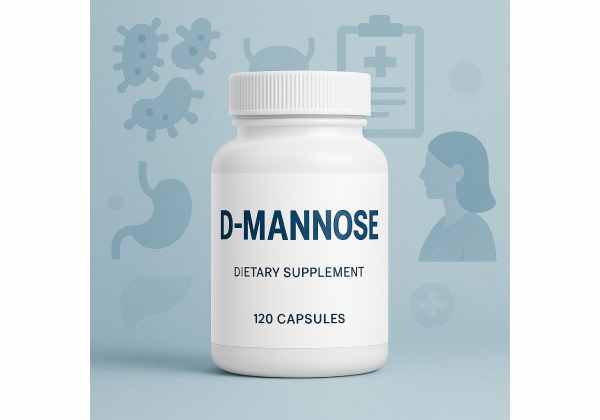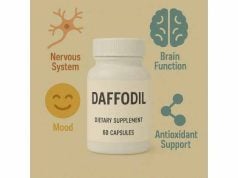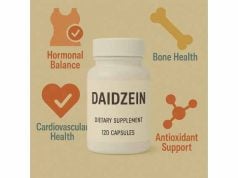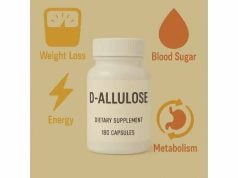
D-mannose is a simple sugar that has attracted attention as a non-antibiotic option for urinary tract health, especially for people who experience recurrent urinary tract infections (rUTIs). In theory, it helps by blocking Escherichia coli (E. coli)—the most common UTI culprit—from sticking to the bladder lining. That biological idea is appealing, and small early studies hinted at benefit. But high-quality, recent trials have tested daily D-mannose against placebo in women with rUTIs and found no preventive effect. Today, most guidelines prioritize proven strategies such as vaginal estrogen (in postmenopause), methenamine hippurate, targeted lifestyle measures, and—when necessary—antibiotic prophylaxis. If you’re considering D-mannose, it’s important to understand how it is supposed to work, what the latest evidence shows, practical dosing used in research, and safety considerations, so you can make an informed choice with your clinician.
Key Takeaways for D-Mannose
- Proposed benefit: may reduce E. coli adhesion in the bladder; real-world preventive benefit not shown in recent RCTs.
- Typical research dose: 2 g/day of powder for prevention; no proven therapeutic dose for acute UTI.
- Safety caveat: generally well tolerated but can cause diarrhea or bloating; rare hypersensitivity reactions reported.
- Avoid or use only with medical advice if pregnant, breastfeeding, diabetic, or prone to kidney disease.
Table of Contents
- What is D-mannose and how it works
- Does D-mannose actually help?
- How to use D-mannose: doses and timing
- Who should consider or avoid D-mannose
- Side effects, interactions, and practical troubleshooting
- Evidence-based alternatives and when to seek care
What is D-mannose and how it works
D-mannose is a naturally occurring monosaccharide related to glucose. Small amounts are present in fruits and also produced in the body as part of normal glycoprotein synthesis. As a supplement, D-mannose is usually sold as a powder or capsule.
Why people take it: Most uncomplicated UTIs start with uropathogenic E. coli (UPEC) traveling from the perineal area into the bladder. UPEC uses hair-like projections (type 1 pili) with a tip protein called FimH to latch onto mannose residues on cells that line the urinary tract. The concept behind D-mannose is straightforward: provide free mannose in the urine so FimH binds to that instead of the bladder wall, reducing bacterial adhesion and making it easier to flush microbes out during urination.
What happens in the body: After oral intake, D-mannose is absorbed in the gut, filtered by the kidneys, and excreted in urine. Because it’s largely not metabolized into energy the way glucose is, it can appear in urine in meaningful amounts without creating a large blood-sugar spike for most people. That said, it’s still a sugar, and people with diabetes should consider glucose monitoring if they try it, as individual responses vary.
Why mechanism isn’t the whole story: A plausible mechanism doesn’t guarantee clinical success. Several things can blunt the effect:
- Not all rUTIs are caused by FimH-expressing E. coli. Other bacteria (e.g., Klebsiella, Proteus, Enterococcus) won’t respond to a mannose-blocking strategy.
- Even with UPEC, adhesion is only one step; biofilms, host factors, vaginal estrogen status, sexual activity patterns, and bladder emptying can dominate recurrence risk.
- Dose, timing, urine concentration, and adherence all matter—and real-world patterns often drift from idealized use.
Bottom line: D-mannose is designed to be a selective anti-adhesion strategy rather than an antimicrobial. The idea is elegant and low-resistance, but clinical outcomes depend on the whole UTI picture, not the mechanism alone.
Does D-mannose actually help?
Short answer: The most rigorous modern trial found no benefit of daily D-mannose for preventing rUTIs in primary care.
What the best trial showed: In a large, double-blind, placebo-controlled randomized clinical trial across UK primary care practices (n≈600 women with rUTIs), participants took 2 g of D-mannose daily or placebo for six months. At the end of the study, roughly half of the women in each group had a medically attended UTI; D-mannose did not reduce recurrences compared with placebo, and symptom scores, antibiotic use, and quality-of-life measures were also not improved. The authors concluded that D-mannose should not be recommended for prophylaxis in this population. ([PMC][1], [PubMed][2])
How this fits with earlier evidence: Earlier small RCTs and observational studies suggested possible benefit, but they had limitations: small samples, mixed comparators (including antibiotics), and inconsistent dosing schedules. A 2022 Cochrane review judged the evidence inconclusive, citing few trials and high risk of bias. The 2024 trial addressed many of those gaps with stronger methods and still found no effect. ([Cochrane][3])
What guidelines say now:
- The NICE guideline on recurrent UTI (updated December 12, 2024) emphasizes non-antibiotic options with evidence such as methenamine hippurate and appropriate antibiotic prophylaxis when indicated; D-mannose is not a recommended prophylactic strategy based on current evidence. ([NICE][4])
- A 2024 consensus guideline published in JAMA Network Open likewise notes insufficient evidence to support or refute D-mannose for prevention. ([JAMA Network][5])
Why some people still report benefit: Real-world use includes people whose UTIs are indeed driven by FimH-positive E. coli, who take D-mannose at the first hint of symptoms, and who also adjust behaviors (hydration, post-coital voiding). Improvements in those contexts can feel attributable to D-mannose, but they’re not proof of efficacy across a broad rUTI population—especially when rigorous trials disagree.
Key takeaways from the evidence:
- Prevention: Strongest modern trial shows no preventive benefit at 2 g/day over six months. ([PubMed][2])
- Treatment of acute UTI: There are no high-quality trials showing D-mannose cures active infections; antibiotics remain first-line for bacterial cystitis unless your clinician advises otherwise. Guideline-supported non-antibiotic measures focus on prevention, not treatment replacement. ([NICE][4], [IDSA][6])
- Heterogeneity matters: If your recurrences are due to non-E. coli organisms, vaginal atrophy, incomplete bladder emptying, or behavioral triggers, D-mannose won’t address the root cause.
How to use D-mannose: doses and timing
Important context: Because high-quality evidence does not show benefit for prevention, there is no “approved” dose. What follows reflects how D-mannose has been used in research and practice—shared here to orient discussions with your clinician, not as a recommendation to self-treat.
Doses used in studies and common practice:
- Prevention (rUTI): Many products suggest 2 g/day (either once daily or divided), matching the dose used in the large 2024 RCT. Some older protocols used 1 g twice daily. Evidence for benefit remains lacking. ([PubMed][2])
- At symptom onset: Some people take 1–2 g up to 2–3 times daily for a few days, then step down. This pattern comes from smaller studies and expert opinion rather than definitive trials; it should not replace seeking care for UTI symptoms, especially if you’re pregnant, have fever/flank pain, or have risk factors for complications.
Formulations and quality:
- Powder vs capsules: Powders make it easier to reach gram-level doses; capsules vary (often 500 mg each), so check labels carefully.
- Third-party testing: Choose brands that publish independent testing for identity and purity; avoid products with unnecessary additives or proprietary blends.
How to take it (if you and your clinician elect a trial):
- Hydration matters. Adequate fluid intake helps dilute urine and may assist in flushing bacteria—regardless of D-mannose use.
- Timing: For prevention, consistency matters more than clock time; for symptom-onset use, people often dose early in the day and avoid late-evening large doses to reduce nighttime bathroom trips.
- Monitor outcomes: Keep a simple log of symptoms, UTIs (with culture results where possible), antibiotic courses, and any side effects. If there’s no clear benefit after a defined period (e.g., 6–12 weeks for prevention), it’s reasonable to stop.
Situations where D-mannose is inappropriate as monotherapy:
- Fever, flank pain, vomiting, or systemic symptoms (possible pyelonephritis): seek urgent care.
- Pregnancy: symptomatic bacteriuria requires clinician-directed antibiotics to protect maternal and fetal health.
- Complicated UTI risk (e.g., urinary tract abnormalities, stones, catheters, immunosuppression): follow specialist advice.
Cost-value perspective: Even if tolerable, D-mannose can become expensive over months. Given the lack of demonstrated efficacy for prevention, the opportunity cost (delaying proven options) is a real concern.
Who should consider or avoid D-mannose
Who might still consider a supervised trial:
- Adults with rUTIs strongly suspected to be E. coli-predominant, who prefer a non-antibiotic approach, and who understand that evidence does not show prevention benefit at 2 g/day in the largest trial. Any trial should be time-limited with clear stop rules and attention to more effective options (see below). ([PubMed][2])
Who should avoid or only use with medical advice:
- Pregnancy or breastfeeding: Safety data are limited; UTIs in pregnancy require prompt evaluation and effective antibiotics.
- Diabetes: Although D-mannose is not metabolized like glucose, monitor blood sugar—individual responses vary, and large doses are still a carbohydrate load.
- Kidney disease or history of kidney stones: Excretion is renal; high intakes could theoretically stress compromised kidneys.
- History of hypersensitivity reactions: Rare serum sickness–like reactions have been reported with D-mannose supplements; any rash, fever, or joint pains warrant stopping and seeking medical attention. ([BioMed Central][7])
- Catheters, anatomic abnormalities, or neurogenic bladder: Recurrence drivers are often structural or device-related; focus on urologic evaluation and guideline-based management.
When D-mannose is the wrong tool:
- Culture-negative urinary symptoms (frequency, urgency, pelvic pain) may reflect overactive bladder or bladder pain syndrome, not UTI; D-mannose won’t help and may distract from the correct diagnosis.
- Non-E. coli pathogens: Adhesion biology differs; mannose won’t block organisms that don’t rely on FimH.
- Antibiotic-requiring infections: Do not delay effective treatment for suspected acute bacterial cystitis while “testing” D-mannose, particularly if you have risk factors for complications.
Shared decision-making tips:
- Start with diagnostic clarity: confirm at least one culture-proven infection to ensure you’re treating the right problem.
- Prioritize exposure and risk factor management (see final section) that show meaningful effect sizes in trials.
- If you try D-mannose, establish an exit strategy (e.g., no benefit after 8–12 weeks → discontinue) and move to better-supported options.
Side effects, interactions, and practical troubleshooting
Common side effects (usually dose-related):
- Gastrointestinal: Diarrhea, bloating, gas, and sometimes abdominal discomfort are the most frequent complaints. Reducing the dose or dividing it across the day may help.
- Taste and palatability: Powders can be sweet; some users experience mild nausea with concentrated solutions—mixing in more water can help.
Less common but important:
- Hypersensitivity: Watch for rashes, hives, fever, or joint pains; rare serum sickness–like reactions have been described—stop immediately and seek care if these occur. ([BioMed Central][7])
- Glycemic effects: In people with diabetes or insulin resistance, monitor glucose around new dosing; although D-mannose is not glucose, it is a sugar load and individual responses differ.
- Kidney concerns: High intakes may theoretically burden renal excretion; people with CKD should avoid unsupervised use.
Potential interactions and confounders:
- Stacking supplements: Don’t combine D-mannose with multiple “uro-health” blends that include additional sugars, botanicals, or alkalinizing agents; GI upset and label confusion are common.
- Urinary alkalinizers: Products that change urine pH may alter symptom perception without treating infection; they can also interfere with dipstick readings.
- Antibiotics: If you start antibiotics for a proven UTI, there’s no evidence that adding D-mannose improves outcomes; it may add cost and GI side effects.
Troubleshooting common scenarios:
- “I keep getting UTIs despite D-mannose.”
- Confirm at least one culture-proven episode—recurrence symptoms can overlap with noninfectious conditions.
- Review sexual activity, spermicides/diaphragm use, postmenopausal estrogen status, and bladder emptying—these often drive recurrence.
- Discuss methenamine hippurate or post-coital antibiotic prophylaxis if appropriate. ([NICE][4])
- “It upsets my stomach.”
- Lower the dose, take with more water, or consider discontinuation—especially if there’s no clear benefit after a defined trial.
- “My home test strips are positive but I feel okay.”
- Avoid treating asymptomatic bacteriuria unless pregnant or preparing for certain urologic procedures; unnecessary antibiotics can cause harm. Follow guideline-based care. ([Uroweb][8])
Red flags—seek care promptly:
- Fever, flank pain, nausea/vomiting, blood in urine, pregnancy, or symptoms lasting >48 hours without improvement—all warrant timely medical evaluation.
Evidence-based alternatives and when to seek care
If your goal is fewer infections and fewer antibiotics, several strategies have stronger support than D-mannose.
Non-antibiotic prevention with evidence:
- Vaginal estrogen (postmenopause): Restores the vaginal microbiome and lowers rUTI risk meaningfully; various formulations exist (rings, creams, tablets). Discuss contraindications and monitoring with your clinician. ([NICE][4])
- Methenamine hippurate: An antiseptic that converts to formaldehyde in acidic urine, reducing bacterial growth. The ALTAR program and subsequent guideline updates support its use as an alternative to continuous antibiotics in suitable women. ([NICE][4])
- Behavioral measures with practical value: Adequate hydration, post-coital voiding, avoiding spermicides/diaphragms if they trigger episodes, and optimizing bowel habits (severe constipation can increase UTI risk).
Antibiotic-based options (when indicated):
- Targeted prophylaxis: Post-coital single-dose or low-dose nightly regimens for a limited period in women with clear, culture-proven rUTIs and risk-benefit discussions.
- Self-start therapy: For selected, reliably diagnosed recurrences—after a clinician provides a prescription and clear instructions.
What about other supplements?
- Cranberry products: Some modern analyses suggest modest benefit in reducing rUTIs for certain populations, but effects vary by formulation and proanthocyanidin (PAC) content.
- Probiotics: Evidence remains mixed; vaginal estrogen has stronger data in postmenopausal women.
When to escalate or seek specialist input:
- ≥2 infections in 6 months or ≥3 in 12 months, especially if cultures show non-E. coli pathogens, antibiotic resistance, or unusual organisms.
- Symptoms without positive cultures, symptoms suggesting stones, obstruction, or anatomic abnormalities; consider urology referral.
- Pregnancy, men, children, neurogenic bladder, catheters, or immunocompromise—management differs from uncomplicated rUTIs.
Decision framework to discuss with your clinician:
- Confirm the diagnosis (culture at least once).
- Identify drivers (hormonal, behavioral, mechanical).
- Choose first-line prevention (vaginal estrogen if appropriate; methenamine hippurate; selected behavioral changes).
- Reserve antibiotics for clearly indicated situations—with stewardship in mind.
- Reassess after 3–6 months. If there’s no improvement, adjust course rather than stacking more unproven supplements.
Bottom line: While D-mannose has a neat mechanism, modern trials and guidelines do not support its preventive use for most women with rUTIs. Focus on strategies with demonstrated benefits and tailor the plan to your specific risk factors.
References
- D-Mannose for Prevention of Recurrent Urinary Tract Infection Among Women: A Randomized Clinical Trial 2024 (RCT)
- Urinary tract infection (recurrent): antimicrobial prescribing 2024 (Guideline)
- Guidelines for the Prevention, Diagnosis, and Management of Urinary Tract Infection 2024 (Guideline)
- D-mannose (sugar tablets) for preventing or treating urinary tract infections in adults and children 2022 (Systematic Review)
- Serum sickness-like reaction to D-mannose supplement 2024 (Case Report/Safety)
Medical Disclaimer
This article is informational and does not replace personalized medical advice, diagnosis, or treatment. Do not self-treat suspected urinary tract infections or start any supplement, including D-mannose, without discussing risks and alternatives with a qualified clinician—especially if you are pregnant, breastfeeding, have diabetes, kidney disease, or recurrent infections. If you develop fever, flank pain, or worsening symptoms, seek medical care promptly.
If this guide was useful, please consider sharing it on Facebook, X (formerly Twitter), or your preferred platform, and follow us for more evidence-based health explainers. Your support helps us continue producing high-quality, independent content.










